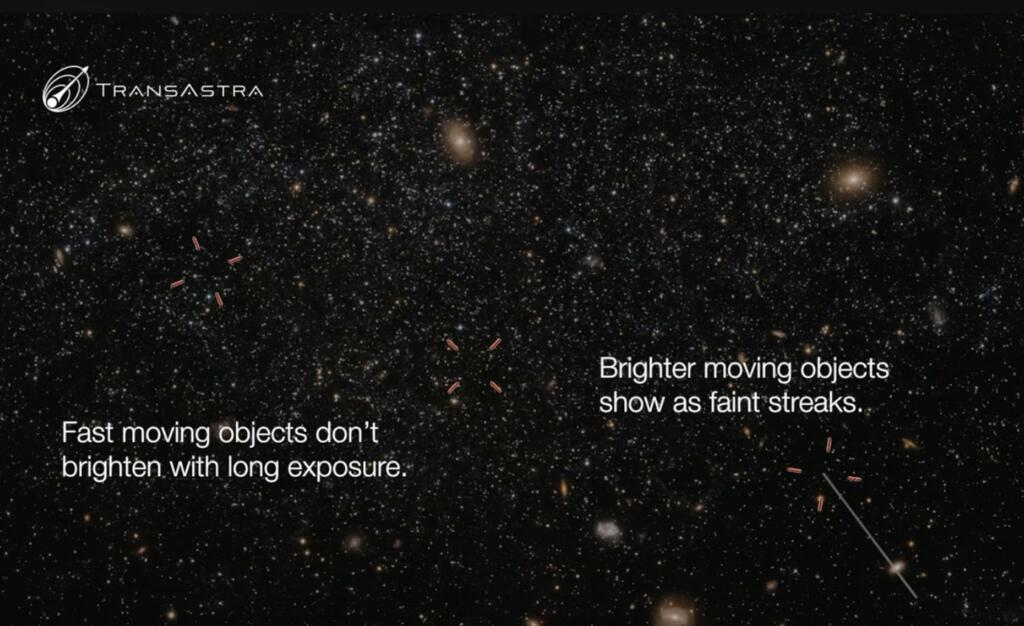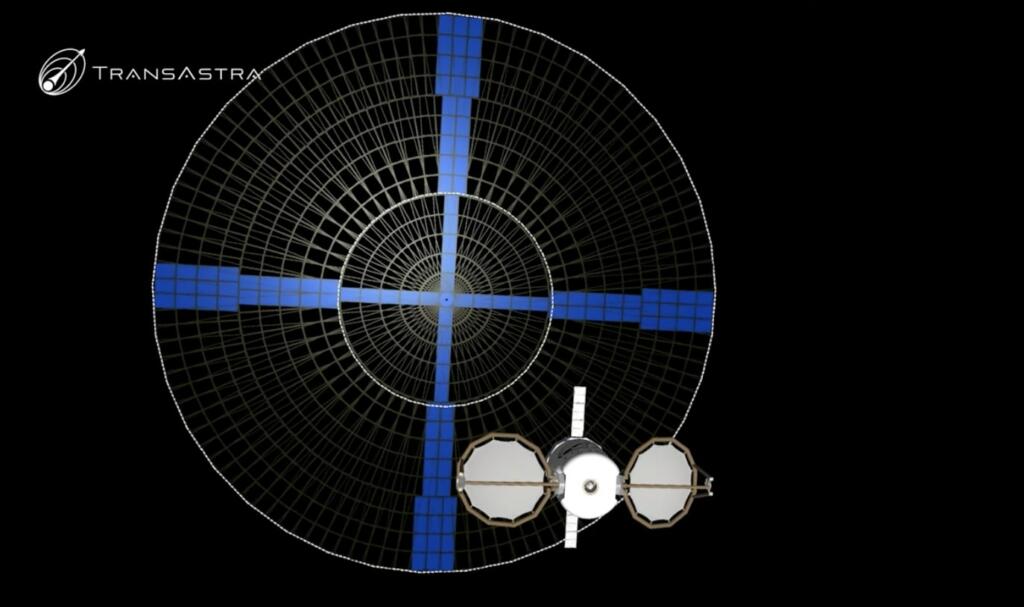The current Transastra Sutter ground telescope test model, comprising four telescopes, moved in early April to the Winer Observatory, where over two months it tracked multiple small, dark, fast-moving objects by collecting about 50 extended images every night built from over 6,000 exposures taken over an eight-hour period.
They will launch a cubesat in 2023 that will detect hundreds of near-earth asteroids.
In 2026, Transastra will launch three satellites each with 109 small 30 cm telescopes. They will position themselves at L2, L4 and L5 to observe the earth-moon area. They will be able to track every object down to cubesat size and even smaller. They will be able to track all modest sized space debris. They will be able to find 300 times more near earth asteroids than are currently known.
Near earth asteroids are easier to reach than the moon. They can be reached with smaller rockets.
They have software that improves the sensitivity by over 100 times. They track the faint blur of moving objects and predict the movement across multiple image frames.
The success of this capability means being able to track all kinds of fainter moving objects in space. This will mean better and better tracking of space debris and smaller rocky objects.
Even more telescopes and improved software should see the followup to the 2026 mission have continually growing capabilities. The techniques could also be used to find darker objects in the Asteroid belt, Kepler Belt and Oort comet cloud.











Brian Wang is a Futurist Thought Leader and a popular Science blogger with 1 million readers per month. His blog Nextbigfuture.com is ranked #1 Science News Blog. It covers many disruptive technology and trends including Space, Robotics, Artificial Intelligence, Medicine, Anti-aging Biotechnology, and Nanotechnology.
Known for identifying cutting edge technologies, he is currently a Co-Founder of a startup and fundraiser for high potential early-stage companies. He is the Head of Research for Allocations for deep technology investments and an Angel Investor at Space Angels.
A frequent speaker at corporations, he has been a TEDx speaker, a Singularity University speaker and guest at numerous interviews for radio and podcasts. He is open to public speaking and advising engagements.


All attention goes to asteroids, because they are relatively easy to track. We will be blindsided and made extinct by the real threat: comets.
Gotta wade before you swim, you know. This sort of thing is at least a start towards detecting comets early enough to do something if they’re on an impact path.
Yes, but we’ve been wading for over 30 years and the comet problem is almost never even mentioned. Suggests to me it’s all about funding pet projects rather than alerting us to ELEs. It should be framed as Phase I: Asteroids, Phase II: Comets….
Is there really a sharp dividing line between a comet and an asteroid that’s got a high volatile content and an eccentric orbit?
I do kind of think that the apohelion (or apogee, maybe) needs to be beyond Neptune in particular, and the perihelion somewhat inside the orbit of Mars. Read that somewhere non-authoritative.
So, while there may be gadzooks of Plutinos and Trans Neptunians, and of them all the newer ones are loaded with volatiles, but the old ladies are gasless due to the relentless sintering of Big Ol’ Sol, it isn’t considered au currant to call ’em comets or relic comets. Newton’s gravitation and damned fine luck lassoed them each into their ‘-ino’ namespace.
Just saying…
GoatGuy
There’s also HAARP:
“The experiment, which bounced long-wavelength radio signals off the surface of the passing object to reveal information about its interior and composition, was conducted last week at Alaska’s High-frequency Active Auroral Research Program (HAARP) research facility near Gakona.”
See:
https://thedebrief.org/haarp-facility-experiment-bounces-radio-signals-off-space-object-to-help-boost-planetary-defense/
What a great project! Keep us informed.
I absolutely love reading about your theories and facts of our universe and I deeply feel like we are all connected to the universe and we are connected to each other in some form or fashion thank you for sharing everything that you have found so we can all see how beautiful the universe is and realize how small we are.